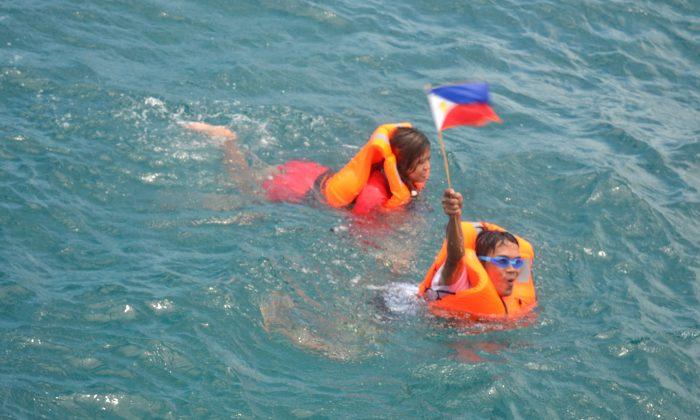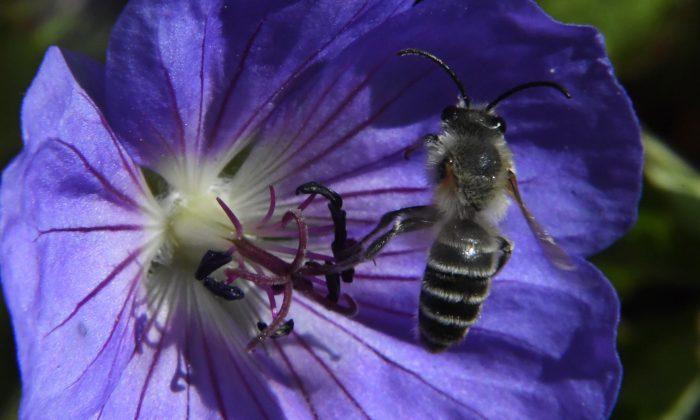One month prior to the ruling on the Philippines’ legal challenge to China’s claims in the South China Sea, a group of Filipinos (and one American) took matters into their own hands and raised the Philippine flag over Scarborough Shoal.
On the morning of June 12 a 90-foot, twin engine wooden fishing boat named the Hannah John brought 15 members of the group Kalayann Atin Ito—the name translates as “This Is Our Freedom”—to the vicinity of the shoal. Accompanying them was Dr. Anders Corr. The publisher of the Journal of Political Risk, Corr has written extensively about the flashpoints of conflict in the South China Sea.
Upon the Hannah John’s arrival, a much larger Chinese Coast Guard cutter immediately intercepted the defenseless fishing vessel.
[gallery ids=“2112634,2112639,2112644,2112661,2112664,2112670,2112667”]
In a scene out of a Hollywood movie, the massive steel hull of the Chinese ship sailed head on at the wood fishing boat, like it was playing a game of chicken on the water.
“That was crazy. It was a scary moment for everyone on board, including myself,” Dr. Corr said in a telephone interview. “When we saw the Chinese ship coming at us, I called out for everyone to put on lifejackets. One man on board scrambled down into the hull and pulled out a big bundle of lifejackets just as the Chinese ship veered away,” he added, with his voice elevated in recounting the showdown.
Accompanying the cutter that had sailed at them was another cutter, a medium-sized ship, and two small pursuit boats.
The group was not deterred. Five them donned swimsuits and life jackets, grabbed Philippine flags, and swam out toward the shoal.
The two pursuit boats with outboard motors intercepted three of the swimmers and over the next half hour played dangerous games terrifying them.
Corr related how on several occasions one of the Chinese outboards drove whirring propeller blades to within two to three feet of striking the swimmers, whose only defense was the lifejackets they were wearing.
The group of three, though, turned into a decoy. While the Chinese boats concentrated on harassing them, Mariel Ipan, 25 years old, and Andresito Villato, 34, were able to swim on to the shoal. For Mariel, it was the first time in her life to swim in deeper water, and this deep water was 125 miles offshore.
The shoal’s rocks were submerged by high tide. Short in stature, Mariel could not stand on the rocks. So, Andresito stood on one of the shoal’s boulders and lifted her up. Mariel held high the Philippine flag.
Upon seeing the flag held up, Corr waved the other swimmers to come back to the Hannah John. As they swam back, tired from their ordeal of fighting the Chinese pursuit boats, they were shadowed all the way.
After four hours at the shoal, the Hannah John turned around and cruised back to the Philippines, mission accomplished.
According to its website, “Kalayann Atin Ito aims to unite the Filipino people—especially the Filipino youth—through a patriotic cause.” That cause is “peaceful protest against China’s aggressive and unlawful taking over of reefs to build artificial islands with military installations in the West Philippine Sea.”
Raising the flag at Scarborough Shoal was meant by the group to be a gesture calling for peace, liberty, and freedom of the sea. The date, June 12, is significant: it is Philippine’s Independence Day.
While Corr is not a Philippine patriot, both he and Kalayann Atin Ito are members of Sea Access by International Law (SAIL). On its Facebook page SAIL says it is “committed to promote peaceful and legal resolution of all maritime disputes worldwide.”
The Scarborough Shoal is like several other disputed geological features in the South China Sea in being so seemingly insignificant. The shoal is a triangular formation of coral reefs and submerged rocks, some of which jut above the water a few feet at low tide.
But it is a proverbially rich fishing ground for Filipino villagers, and for years the Chinese have barred any Filipinos from fishing there.
This denial of the traditional fishing grounds at Scarborough Shoal, grounds that fall well within the Philippine’s 200-mile Exclusive Economic Zone that is recognized by international law, is one of 15 points of contention that was brought by the Philippines to the Permanent Court of Arbitration, The Hague, in January 2013.
The most far-reaching of Philippines claims before the Court of Arbitration is that China has no right to the giant swath of the South China it is claiming with a “nine-dash-line” said to be based on ancient Chinese sovereignty.
The court has announced it will decide the Philippines case—which China has refused to respond to, denying the court has the authority to hear it—on July 12. That decision will determine whether China can claim the authority of international law for its sweeping claims. The members of Kalayann Atin Ito will be watching closely.






Friends Read Free